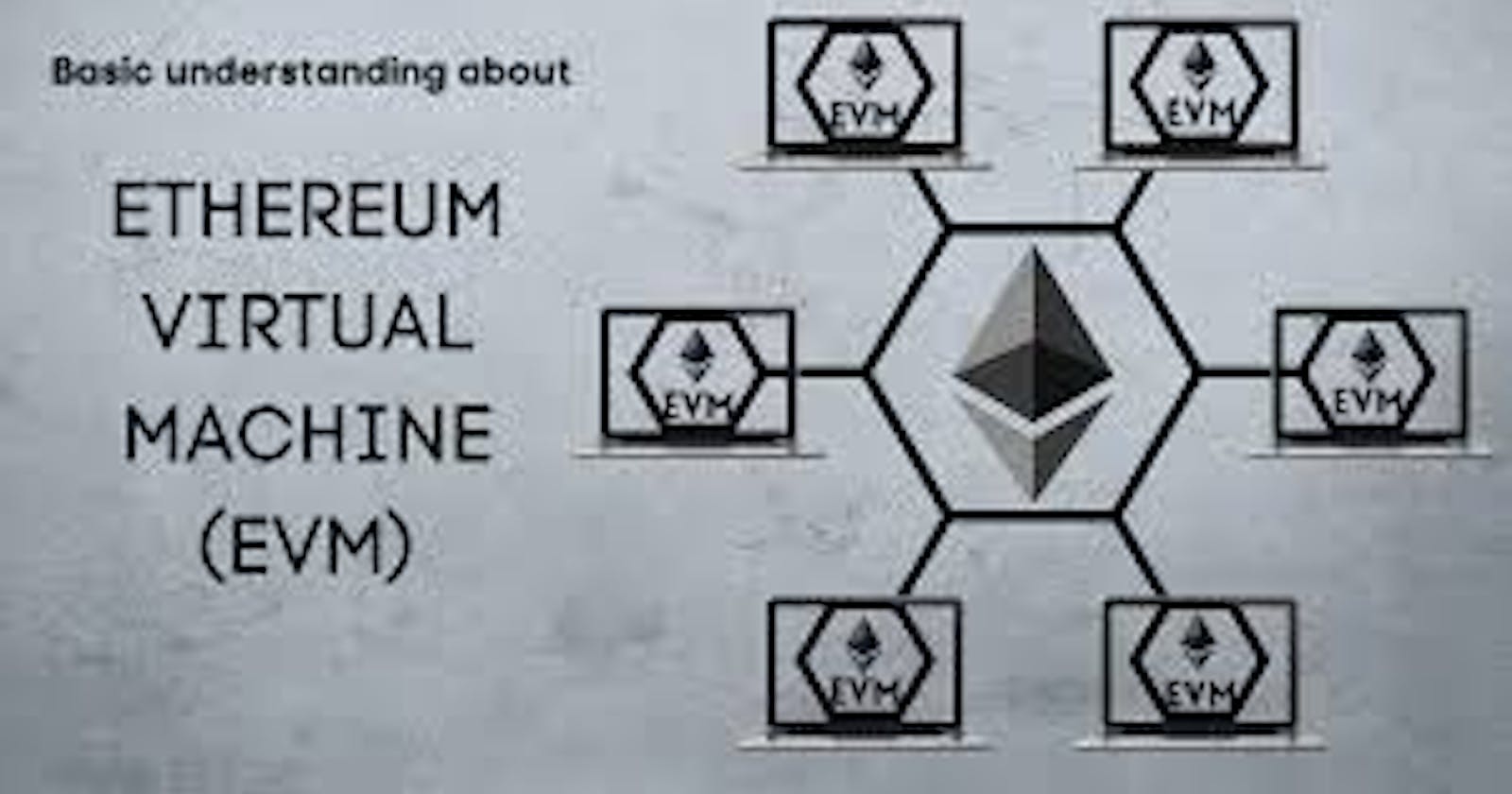The Ethereum virtual machine (EVM) which is often referred to as “the heart of Ethereum” grants developers the ability to create smart contracts and DApps in the programming language.
In this article, we will dive into Ethereum virtual machines and break down what they are, how they work and their role in DApp development and Web 3.
TABLE OF CONTENT
- WHAT IS AN EVM
- FUNCTIONS OF AN EVM
- HOW DO EVMS WORK
- ROLE OF EVM IN DAPPs
- DEVELOPMENT AND WEB3 EVM
- -THE LIMITATIONS OF EVM
- EXPLAINING GAS
What is an Ethereum Virtual Machine (EVM)?
An Ethereum virtual machine is a software platform, or “virtual computer,” used by developers to create decentralized applications (DApps), as well as to execute and deploy smart contracts on the Ethereum system.
It is generally assumed to be one of the core elements in the working of Ethereum. The Ethereum virtual machine’s purpose is to determine the state of every block in the Ethereum blockchain.
While EVMs are similar to other blockchain-based networks in that they use a distributed ledger to maintain databases for transactions, they add another layer of functioning due to their smart contract capabilities. It is completely isolated meaning that the code inside the EVM has no access to network, file system or other processes.
EVM is a large database for holding all of Ethereum’s accounts and balances. At the same time, an EVM is also a machine state with the ability to execute machine code and change with each new block added to the blockchain ledger.
The specific rules that determine how the EVM will change with each new block are actually defined by the EVM itself which makes it function like a decentralized computer.
FUNCTIONS OF AN ETHEREUM VIRTUAL MACHINE
Ethereum Virtual Machine functions as a massive database for storing all the accounts and balances on the Ethereum blockchain. It also works as a machine state with the capabilities for executing machine code and adapting according to the addition of new blocks in the blockchain ledger.
EVM has several functions, some of which includes:
1) Executing code for smart contracts: Ethereum Virtual Machine executes the code for smart contracts- they are self-executing contracts with the terms of the agreement between buyer and seller being directly written into lines of code.
2) Enforcing the terms of smart contracts: It ensures that the terms of smart contracts are followed by all parties involved. If the terms of the contract are not met, the EVM can automatically trigger the execution of predetermined actions.
3) Providing a secure and decentralized platform: EVM runs on a decentralized network of computers, which makes it secure and resistant to tampering or censorship.
4) Facilitating the exchange of value: EVM enables the exchange of value in the form of Ether, a cryptocurrency used on the Ethereum network, between parties involved in a smart contract.
5) Running decentralized applications (DApps): EVM enables the development and deployment of decentralized applications (DApps), which are applications that run on a decentralized network rather than a single computer or server.
How Do EVMs Work?
The Ethereum Virtual Machine (EVM) is a runtime environment that executes codes for smart contracts written in Solidity which is a programming language for the Ethereum platform. When a smart contract is deployed on the Ethereum network, it is compiled into bytecode, which is a low-level, machine-readable representation of the contract.
This bytecode is then executed by the EVM. The EVM works by running a loop that continuously reads and executes instructions in the bytecode of a smart contract. These instructions, known as "opcodes," then performs various actions such as arithmetic operations, memory access, and control flow.
The EVM also maintains a global state, which includes data such as the balances of Ethereum accounts and the values of storage variables in smart contracts. In addition to executing the code of smart contracts, EVM also plays a key role in enforcing the terms of the contract. If the terms of the contract are not met, the EVM can automatically trigger the execution of predetermined actions.
EVM runs on a decentralized network of computers, which makes it secure and resistant to tampering or censorship. It is a crucial component of the Ethereum platform, enabling the development and deployment of decentralized applications (DApps) and facilitating the exchange of value in the form of Ether, a cryptocurrency used on the Ethereum network.
ROLE OF EVM IN DAPPs DEVELOPMENT AND WEB3
In accordance with what was written at the beginning of this article, it can be seen and accepted that Ethereum Virtual Machine (EVM) is a key component of the Ethereum network and plays a crucial role in the development of decentralized applications (DApps) on the platform.
One of the main benefits of using the EVM for DApp development is that it allows developers to write code that is executed in a trustless, decentralized manner. This means that the code is executed exactly as written, without the possibility of interference or manipulation by any single party. This is particularly useful in the context of DApps, as it allows developers to build applications that can be trusted to operate in a transparent and fair manner.
In addition to providing a secure and transparent execution environment, the EVM also offers a number of other benefits to DApp developers. For example, the EVM supports a wide range of programming languages, which makes it easy for developers to build DApps using their preferred language.
EVM also includes a number of built-in functions and libraries that can be used to interact with the Ethereum network and perform common tasks, such as reading and writing data to the blockchain.
It also provides a high level of security, as all code executed on the EVM is subject to review and verification by the Ethereum network. Which helps to ensure that DApps built on the platform are reliable and secure. EVM makes it easy to migrate and expand DApps to new chains without having to rewrite any code. Using another type of virtual machine, like Move-VM or Wasm, requires more resources and makes porting DApps much more difficult.
In essence, the EVM is an essential component of the Ethereum network and plays a crucial role in enabling the development of DApps on the platform. It allows developers to build decentralized applications that can be trusted to operate in a transparent and fair manner and it ensure that DApps built on the web3 platform are reliable and secure.
THE LIMITATIONS OF EVM
When trying to understand EVMs, it is important to consider both its pros and cons. Despite its many advantages, EVM technology also comes with certain limitations.
Firstly, using an Ethereum virtual machine requires some level of technical experience hence knowledge of Solidity, Java, and other programming languages is a must.
Secondly, EVMs are infamous for their high gas fees. No matter how smart an EVM may be, it can’t avoid its own popularity and the data congestion that comes with it, resulting in higher transaction fees compared to other chains.
EXPLAINING GAS:
Gas is the fuel that drives the Ethereum virtual machine. Whether you’re transferring EVM crypto or investing in an NFT, gas is needed to pay for the execution of the operation.
It acts as a computational fee required for executing smart contracts. Each opcode is assigned a gas cost and the more complex the opcode, the higher the gas fee. Gas fees are charged in order to compensate the validators responsible for checking to make sure the transaction information is valid, and that there are no exceptions or errors from the EVM.
Importantly, gas fees help prevent DDoS attacks (DDOs attacks is a category of malicious cyber-attacks that hackers or cybercriminals employ in order to make an online service, network resource or host machine unavailable to its intended users on the Internet) and keep the network secure.
Since deploying complex contracts at scale would require lengthy and expensive computations, attackers are monetarily discouraged from making any malicious attempts. The attack would simply be too expensive to run.
BOTTOM LINE
Ultimately, EVMs are the heart and soul of smart contract deployment and execution. Gaining a deeper understanding of the Ethereum virtual machine is a must for anyone looking to develop DApps and dive into our future which is a decentralized world.

